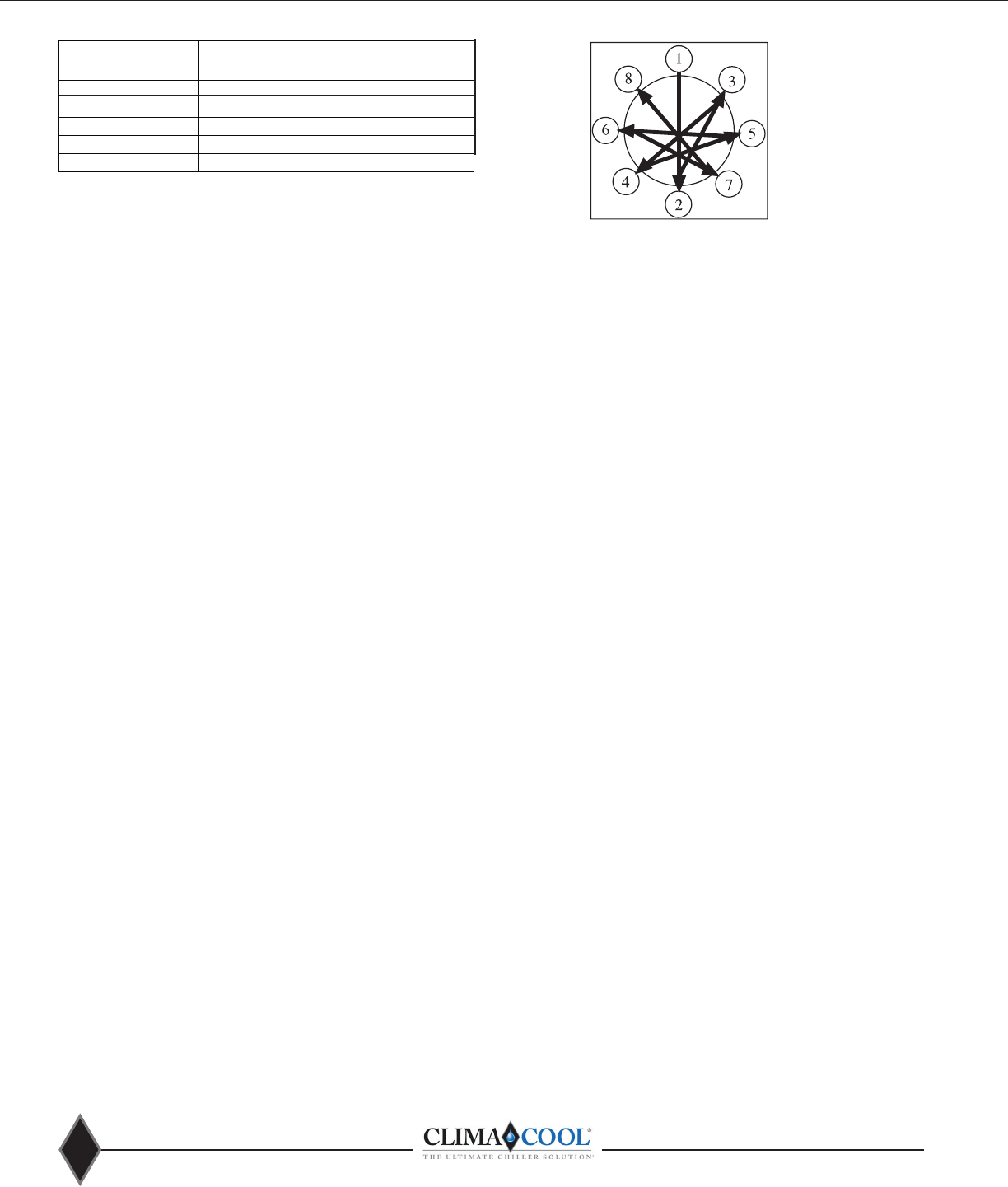Manual

www.climacoolcorp.com
54
Strainer Operation
collected and settles to the bottom of the strainer reservoir.
CS-3 strainers must have a valve installed on the drainage
the strainer. When it becomes time to clean the strainer,
time will typically range from 15 to 60 seconds depending
collected by the strainer. As a general rule, the larger strainers
will require higher inlet water pressures in order to achieve
than 40 psi. Note: When shutting down the chiller for
extended periods of time, the strainer should be isolated
and completely drained.
Strainer Element Cleaning
If your strainer assembly is equipped with optional pressure
between the inlet and outlet sides of the strainer. When this
may require cleaning.
Caution: Prior to dismantling the strainer for cleaning, it
is imperative that the strainer assembly is isolated and
completely de-pressurized.
Follow the steps below when cleaning the CS strainer
element:
Step 1.
strainer by removing the Grade 5 Zinc plated bolts
from the lid.
Step 2.
Step 3.
the strainer body.
Step 4. Carefully scrub down the strainer element with
a rigid nylon brush until all matter is loosened.
Do not use a steel brush.
Step 5.
amount of water pressure.
Do not use a pressure washer.
Step 6. Wash all matter from the strainer gaskets and
clean the inner-ring where the bottom of the
strainer element rests.
Step 7.
to the bottom of the strainer element.
Reposition the strainer element into the body of
the strainer.
Step 8. Make sure the strainer head gasket is secure
on top of the strainer body. On V-band models,
O-rings should be seated completely in the body
strainer body. Tighten the lid securely either with
the bolts or with the band-clamp.
* For clamped models, opening and closing is achieved
without adjusting the lock nut. It is tightened at the
may be necessary if the gasket loses memory over time.)
To open the clamp, depress the safety latch and pull the
over-center lever outward. To close the clamp, make
sure the T-bolt is seated in its receiver and push the
over-center lever back toward the strainer housing.
Be sure that the safety latch is engaged before putting
the unit to use.
What is Water Hammer?
systems with long pipes. Water hammer is a rapid change
entire system is raised very quickly.
Figure 21 - Recommended Torquing Sequence
Note:
Table 1
Strainer Bolt Size
(inches)
Recommended
Torque
(. lbs)
3CS 5/16 - 18 60 - 80
4CS 3/8 - 16 15 - 25
6CS 1/2 - 13 45 - 55
8CS 1/2 - 13 45 - 55
10CS 5/8 - 11 80 - 100
Table 2
Stainless Steel Strainer Option










